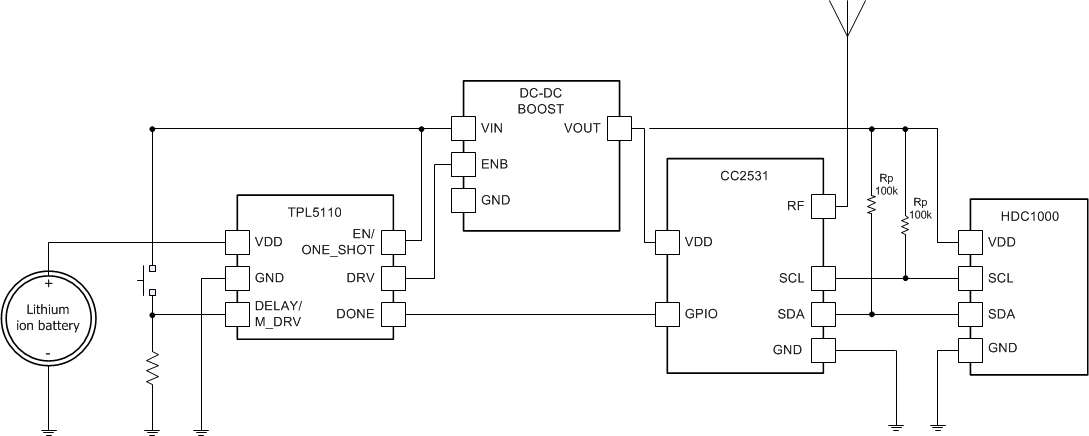ZHCSEK5A JANUARY 2015 – September 2018 TPL5110
PRODUCTION DATA.
- 1 特性
- 2 应用
- 3 说明
- 4 修订历史记录
- 5 Pin Configuration and Functions
- 6 Specifications
- 7 Detailed Description
- 8 Application and Implementation
- 9 Power Supply Recommendations
- 10Layout
- 11器件和文档支持
- 12机械、封装和可订购信息
8.2 Typical Application
The TPL5110 can be used in environment sensor nodes such as humidity and temperature sensor node. The sensor node has to measure the humidity and the temperature and transmit the data through a low power RF micro such as the CC2531. The temperature and the humidity in home application do not change so fast, so the measurement and the transmission of the data can be done at very low rate, such as every 30 seconds. The RF micro should spend most of the time in counting the elapsed time, but using the TPL5110 it is possible to complete turn off the RF micro and extend the battery life. The TPL5110 will turn on the RF micro when the programmed time interval elapses or for debug purpose with the manual MOSFET Power ON switch.
 Figure 15. Sensor Node
Figure 15. Sensor Node